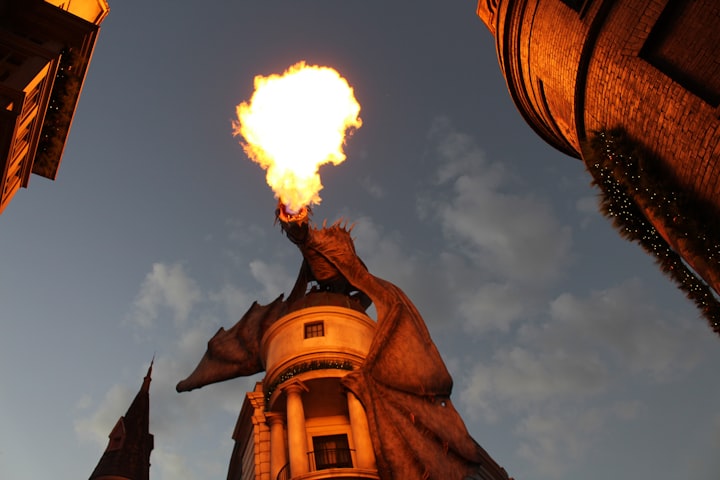A Guide to Legendary and Lair Actions in Dungeons and Dragons (D&D) Fifth Edition (5E)
How to Make the Best of your Boss Monsters in D&D

As your players progress through any individual adventure or campaign, there always comes a point in which your characters (PCs) grow closer and closer to your planned finale or the climax to the adventure. In most cases, adventures end up against some legendary opponent or foe. A boss battle, for lack of a better term. As a DM you need to create a combat encounter that is harder, more unique, more challenging than the average encounter.
This is where Legendary Creatures enter the game, Legendary Creatures are those creatures that are intended to stand better on their own. They may still have allies with them, but they don’t need as many to be a standalone fight, and this is due in part to the fact that they can take more actions per round than a normal monster. In addition, most have a number of Legendary Resistances, the ability to simply shed off your player’s most powerful effects. Lastly, many Legendary Creatures are found in their Lairs. The most powerful Lairs are truly controlled by the Creature, and have their own actions and unique Challenges to make your player’s life difficult. So let’s start from the top!
What is a Legendary Action?
Legendary Creatures are supposed to be able to stand on their own as a type of boss monster. Most Legendary monsters are quite high level, but they don’t have to be, and nothing is stopping you from homebrewing a CR 4 Goblin Boss with Legendary Actions if you want a spectacular end to a low level adventure path. As it stands, most Legendary Creatures find themselves mostly alone in the final battle, facing down the entire party. Legendary Actions are a way for you as the DM to give some measure of balance to the Action Economy so that your final boss isn’t immediately overwhelmed.
Each Legendary Creature available in D&D has a unique set of actions, but they all function the same way. Each Legendary Creature has a pool of actions that they can use each round. Like reaction, these Legendary Actions reset at the beginning of the Creature’s turn. They can take these actions immediately after another creature takes their turn. Most Legendary Creatures have 3 per round. So the creature takes its turn, using all its Actions, Bonus Actions and movement as normal, and then the next person goes. The Fighter, for instance, takes his turn, and when his turn is over, the Legendary Creature activates one action to attack the Fighter for instance. Then the Cleric goes, then the Creature activates another to attack the Fighter and so forth.
Other actions might include moving without provoking attacks of opportunity, casting spells, using other special abilities, etc. The point is that if the Legendary Creature normally makes two attacks on his turn, but can take one additional attack as a Legendary Action. They now get to deal out 5 attacks worth of damage over the course of the round, as well as other small gimmicks that make them more difficult to fight.
What is a Legendary Resistance?
In most D&D combats, there are a number of powerful spells and abilities that simply take a creature out of the fight. Hold Person, Dominate Monster, Banishment, Stunning Strike are easy examples. Most DMs won’t want their Boss Monsters to get immediately taken out by the party, and Legendary Resistances are a way to handle that situation. Legendary Resistances let a Legendary Creature choose to succeed a saving throw that they had failed a number of times per day. These are best used on effects that will greatly cripple them, such as Hold Person or Hold Monster, not on effects like Fireball, in which they simply take some damage. Unless of course, they are a Legendary Creature with few hit points.
Unlike Legendary Actions, Legendary Resistances do not return on a round by round basis. They usually get 3 and that’s all they get until they have rested. This means DM’s must use their resistances strategically, do not waste a resistance unless it will absolutely ruin the combat, and try to save them until later on in the fight when the player’s have wasted some of their stronger abilities. Once those Resistances are gone, the boss can be caught by almost anything, and at that point the players quite likely take the boss down easily.
What is a Lair Action?
The coolest creatures in D&D have amazing lairs, tucked inside forgotten ruins, fetid swamps or on the inside of a volcano! These lairs make the encounter with the final boss even more challenging. If a Lair has a Lair Action, that Action has its own Initiative, which always counts as a 20 (with no bonus). When it’s the Lair’s ‘Turn’ it will take one of the actions laid out for that creature. A lot of Legendary Creatures have 2-4 Lair actions to choose from, but no lair action can be used more than once in a row, so the DM is forced to be more creative about their choices.
In the case of a Volcano, the Lair Action could include the earth shaking, causing characters to fall prone, or lava could erupt from the earth dealing damage and leaving behind a new hazard that changes the battlemap. The Lair Actions give one more additional way that the Boss is able to work directly against the players, and make a unique and challenging final encounter
In conclusion, understanding Legendary Actions, Resistances and Lair Actions gives you the tools to add to any boss fight and run that monster as a final challenge that will leave your players talking about the fight for weeks. These abilities are also useful to add to homebrew monsters to spice them up. Remember that not every boss has to be a Legendary Creature, and not every Legendary Creature has to be a boss battle. Using the template on a creature that you simply want to use on its own can be an interesting way to spice up an encounter, and make sure a creature can hold up against an entire party. Feel free to experiment with what works for you!
If you're looking for more guides to D&D, check out the links below!
About the Creator
Theo James Taylor
Writer, MCU lover, and HUGE RPG nerd (but especially D&D). I have been a ghostwriter for blogs and other publications for 5 years now, but love the freedom Vocal gives me. You can find me DMing an outrageous Homebrew Campaign every Monday!






Comments
There are no comments for this story
Be the first to respond and start the conversation.